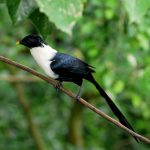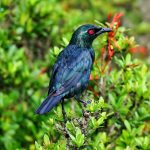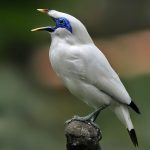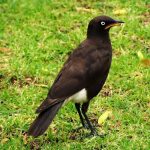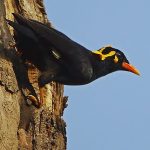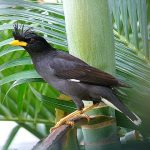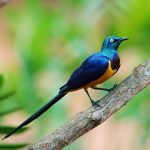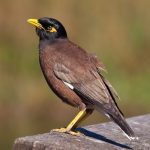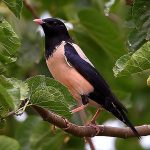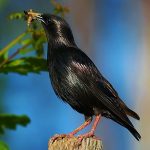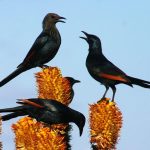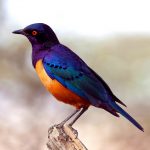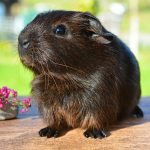Greater blue-eared glossy-starling
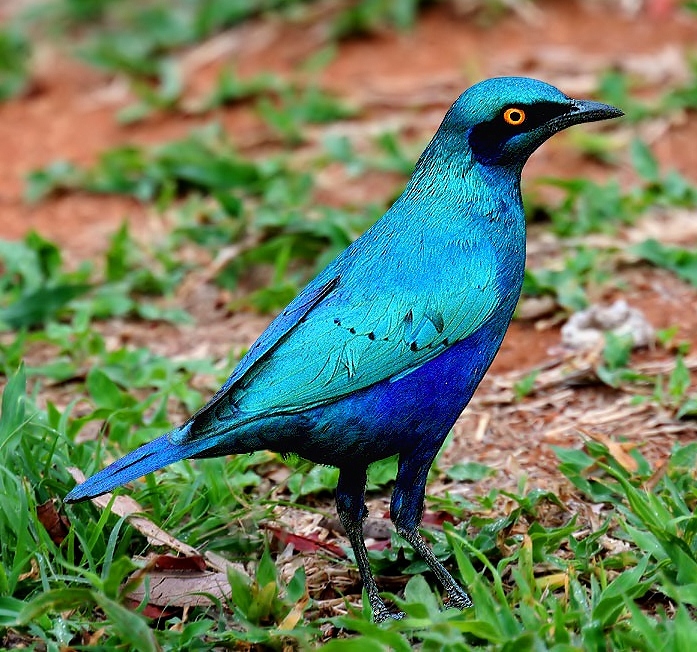
 |
| Photo by Loot Eksteen (Trek Nature) |
Common name:
greater blue-eared glossy-starling (en); estorninho-metálico-grande-d’orelha-azul (pt); choucador à oreillons bleus (fr); estornino orejiazul (es); grünschwanz-glanzstar (de)
Taxonomy:
Order Passeriformes
Family Sturnidae
Range:
This species is widely distributed in sub-Saharan Africa, from southern Mauritania and Senegal to Ethiopia and south through eastern Africa to north-eastern South Africa and Angola. They are absent from the rainforests along the Gulf of Guinea and the congo river basin.
Size:
These birds are 22 cm long and weigh around 90 g.
Habitat:
They are mostly found in dry savannas with dense undergrowth, namely Acacia and mopane Colosphermum mopane, but also in dry scrublands and some moist forests. They are also found in agricultural areas and around human settlements.
Diet:
These birds mainly feed on insects, such as grasshoppers, beetles and termites, but also frogs, small lizards, mice and some fruits.
Breeding:
They breed in August-January. The nest is built by both sexes, consisting of a simple pad of dry grass and feathers placed in a tree cavity, either natural or an old woodpecker or barbet hole. The female lays 2-5 eggs, which she incubates alone for 13-14 days. The chicks are fed by both parents and fledge 3-4 weeks after hatching.
Conservation:
IUCN status – LC (Least Concern)
This species has a very large breeding range and is is reported to be common to abundant. The population is suspected to be stable in the absence of evidence for any declines or substantial threats.
